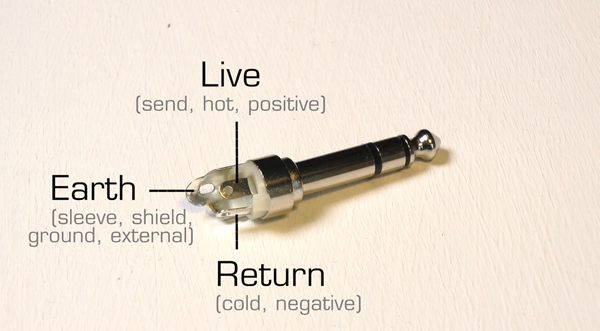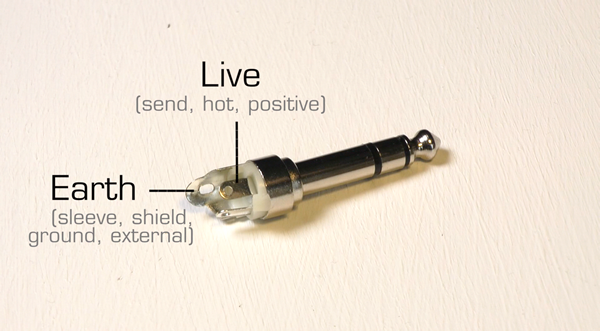Audio interconnection 13
Audio connectors
- Video
- Script
Welcome to this tutorial on connectors.
There are many types of connector, also known as plugs, each with their advantages and disadvantages.
Caption - Connector features
Connectors have the following features ..
- a number of metal contacts or 'poles'
- cable strain relief
- cover
- latching or locking mechanism
Caption - Latching and locking mechanisims
Some connectors, including XLRs, BNC, D-sub and speakons, provide a latching system to lock them in place to ensure that in critical applications they do not become detached. This is particularly important when recording performances.
Caption - Did you know? (non-essential but interesting fact)
Because it does not tarnish, gold is widely believed to be one of the best materials to make connectors from. But did you know that if a connection is made between a gold and a non-gold connector the connection may be poorer than average due to the accelerated oxidizing that can occur when the 2 differing metals are in contact.
Caption - Contacts or 'poles'
All connectors have 2 or more contacts, or 'poles', to connect the cable cores to. Only fibre optic leads are different. Each pole will be isolated from the others with a plastic non-conducting barrier. Each contact carries one of three signal 'types' ..
- Earth - also known as sleeve, shield, ground, and external
- Live - also known as send, hot or positive
- Return - also known as cold or negative

Multi-core, or multi-channel, connectors, will have multiple earth, live and return contacts.
Normally each core is soldered to their contact, but in some connectors some form of clamping may be used.
Caption - Primary connectors
Here is a run-down of the primary connector types ..
- phono - 2 contacts / unbalanced - used for line level analogue and SPDIF coaxial signals
- 1/4” mono jack - 2 contacts / unbalanced
- 1/4” TRS (tip, ring, sleeve), or stereo, jack 3 contacts / balanced
- mini (stereo) jack - 3 contacts / balanced
- GPO B-gauge jack - 3 contacts / balanced
- bantam jack - 3 contacts / balanced
- XLR (canon) male - 3 contacts / balanced
- XLR (canon) female - 3 contacts / balanced
- optical Toslink fibre optic (SPDIF, ADAT, and AES)
- D-sub 25 - 25 contacts unbalanced / balanced
- BNC (Word clock and MADI)
- Speakon (unbalanced loudspeaker connector)
Connectors with 3 contacts can be wired for unbalanced operation. A 1/4" TRS jack with only its live and earth contacts connected will work fine.

Caption - Connectors with multiple applications
Few connectors are limited to one type of signal. Often the same connector can be used for multiple applications.
Looking at the connector on a lead, doesn't necessarily tell you what the lead is for, and what format signal will travel down it, especially when you can't see what's inside the cable.
For example, the TRS stereo jack connector can be used for ..
- an unbalanced stereo headphone lead
- a balanced line level mono lead from a effects processor
- or even a consumer level microphone lead
.. and an XLR connector can be used for ..
- a balanced mono mic lead
- a balanced mono line level signal lead
- an digital AES3 2 channel lead
.. and a phono connector can be used for ..
- an digital SPDIF coaxial stereo lead
- an unbalanced line level mono lead
Caption - Did you know? (non-essential but interesting fact)
Only a few computer connectors having latching systems. Most such as USB, Thunderbolt and FireWire do not. To date, the professional audio world has only fully embraced those that do, such as ethernet and D-sub.
Caption - Stage boxes
Demonstration Stage box connections.
Caption - Adaptors
Demonstration Adaptors.
Caption - Thanks for watching
The script for this video, with accompanying images, can be found at projectstudiohandbook.com
We suggest you subscribe at our YouTube channel, and join our mailing list at our website to receive notification of new videos, blog posts and subscriber only extras.
Thanks for watching.